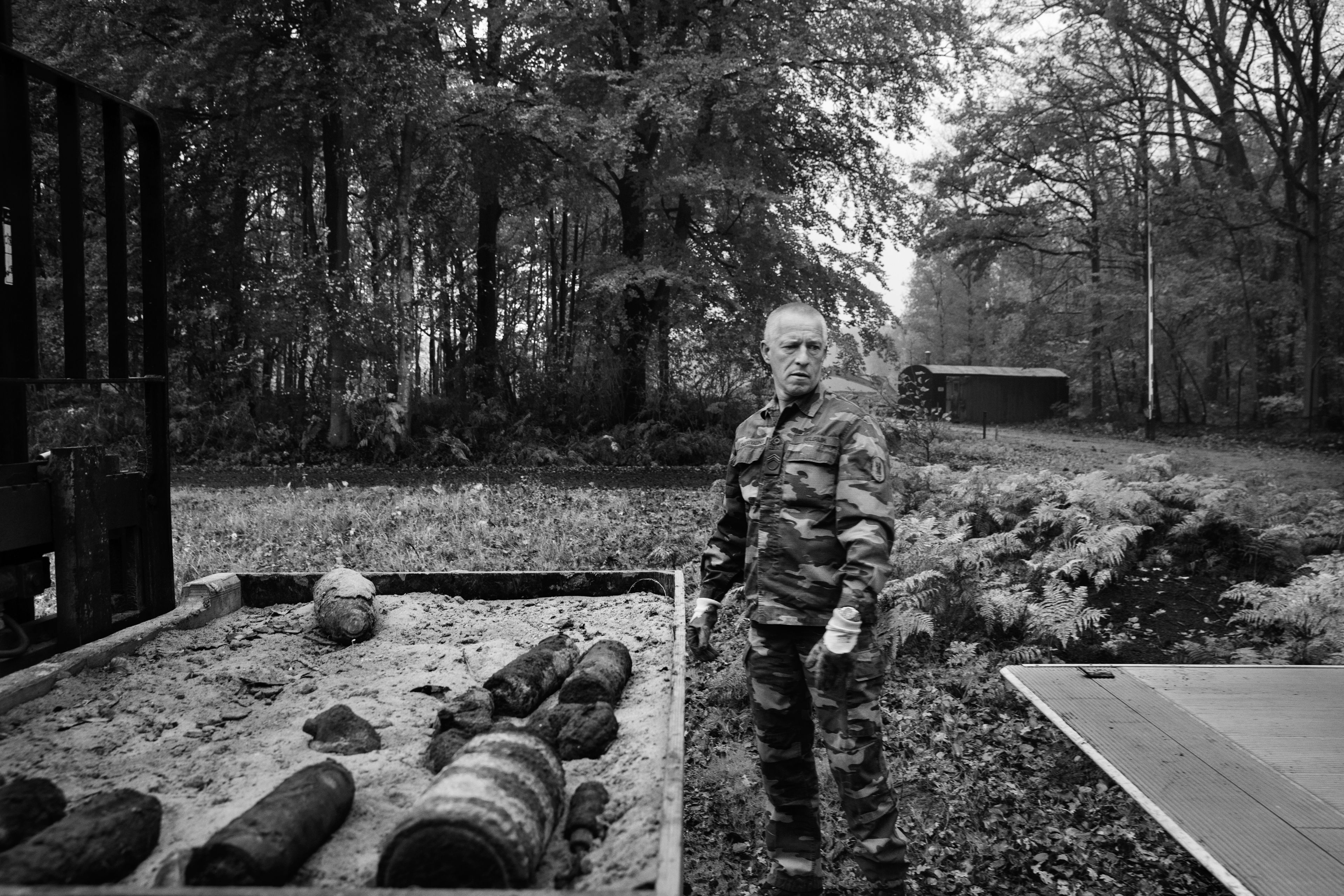ExhibitionDec 12, 2013-Nov 25, 2014
In the ninth consecutive Nobel Peace Prize Exhibiton, the audience for the first time gets to experience how the OPCW inspectors monitor, identify and destroy chemical weapons.
This year’s photographer is the world renowned Paolo Pellegrin from the photo agency Magnum Photos.
Paolo Pellegrin has followed the inspectors closely in the weeks after it was announced that The Organisation for the Prohibition of Chemical (OPCW) is awarded the 2013 Nobel Peace Prize. With American war correspondent and writer Scott Anderson’s short texts, Pellegrin’s graphic and strong black and white images provide a rare insight into the daily lives of the weapon inspectors.
Every year, an estimated 150 tons of unexploded ordnance is recovered from the old World War I battlefields of southwestern Belgium. Of this, an estimated 5% – or some 7 to 8 tons – consists of live chemical weapons, mostly phosphorus artillery shells. With the technical assistance and oversight of the OPCW, the Belgian military employs a special unit to collect and destroy these volatile and highlytoxic munitions that have lain in the ground for nearly a century.
"Paolo Pellegrin has had a unique access to document the dangerous work of the OPCW, and a photographer of his caliber gives this year’s Nobel Peace Prize Exhibition a genuine power," says Bente Erichsen, Executive Director of the Nobel Peace Center. "Pellegrin’s images allows the public close access to some of the unknown heroes of the world, and we very much look forward to opening the doors in December."
The images in the exhibition Combating Chemical Weapons are taken in Libya, the Netherlands and Belgium, and in an Eastern European country, and documents OPCW’s work abolishing chemical weapons of today and from WWI.
Very few have been allowed insight into the daily work of the weapon inspectors. In this exhibition, visitors can see and experience some of the hazardous work themselves.
The making of the official Nobel Peace Prize Exhibition is an annual occurrence that spans a mere eight weeks, from the Chair of the Norwegian Nobel Committee announces the new Peace Prize laureate, to the exhibition is opened by representatives from the OPCW in December.
The exhibition period was 12 December 2013 through 23 November 2014. The exhibition is supported by Mint of Norway.
Share:


